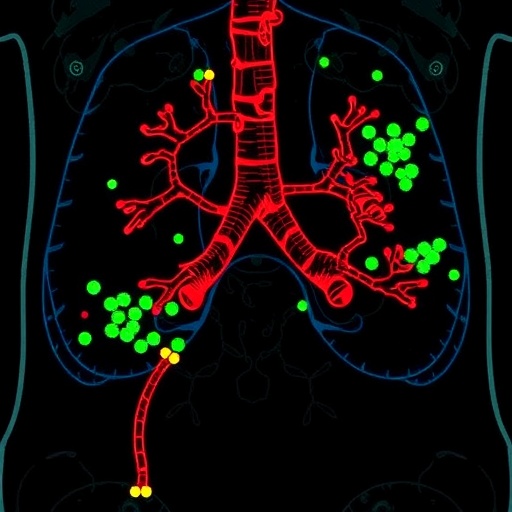In a striking development within the oncology research community, a recent study investigating the role of circular RNA circfarsa in bladder cancer has been formally retracted by its authors. Originally published in BMC Cancer, the study explored the molecular interplay between circfarsa and microRNA-330-5p, hypothesizing a key regulatory mechanism in tumor cells exhibiting a bladder cancer phenotype. The notice of retraction casts significant implications for ongoing research and highlights the critical importance of rigorous validation within molecular biology investigations.
Circular RNAs (circRNAs) are a unique class of endogenous non-coding RNAs characterized by their covalently closed loop structures. Unlike linear RNAs, circRNAs lack 5′ caps and 3′ poly-A tails, thereby conferring them with remarkable stability. Recently, circRNAs have emerged as vital players in gene regulation across numerous pathophysiological contexts, including oncogenesis. In bladder cancer, a malignancy arising from the urothelial lining of the urinary bladder, aberrant circRNA expression profiles have been implicated in tumor progression, metastasis, and therapeutic resistance.
The retracted article sought to elucidate the function of circfarsa, a specific circRNA, in modulating oncogenic pathways through its interaction with microRNA-330-5p (miR-330-5p). MicroRNAs (miRNAs) are short, non-coding RNA molecules that regulate gene expression post-transcriptionally by binding target mRNAs, leading to their degradation or translational inhibition. The concept of circRNAs acting as “microRNA sponges” — sequestering miRNAs and preventing them from downregulating target mRNAs — has revolutionized understanding of RNA-based regulatory networks in cancer.
Through the lens of this research, circfarsa was hypothesized to act as a molecular sink for miR-330-5p within bladder cancer cells, effectively attenuating the tumor-suppressive functions of this microRNA. miR-330-5p itself has been documented in various malignancies for its ability to modulate cell proliferation, apoptosis, and invasion, rendering it an attractive target for therapeutic manipulation.
The initial findings proposed that circfarsa sequestration of miR-330-5p enhanced the malignant phenotype of bladder cancer cells by derepressing oncogene expression. This mechanistic insight suggested novel intervention points, potentially guiding the development of RNA-based therapeutics aimed at disrupting the circfarsa/miR-330-5p axis to inhibit tumor growth and dissemination.
However, subsequent re-examination of experimental data and methodological approaches led the authors to retract their conclusions. While no specific incidents have been publicly detailed, retractions in molecular oncology frequently arise from incomplete reproducibility, lack of sufficient controls, or data misinterpretation undermining the validity of conclusions. This cautious retrenchment underscores the complexities inherent in dissecting intricate RNA regulatory networks, where subtle technical nuances critically influence results.
The bladder cancer research field is particularly sensitive to such developments, given the pressing need for reliable biomarkers and novel therapeutic targets. Bladder cancer remains one of the most prevalent urological malignancies worldwide, with high recurrence rates and variable treatment responses. Insight into RNA-mediated gene regulation continues to hold promise for addressing these clinical challenges.
The retraction also serves as a reminder of the evolving nature of scientific knowledge and the responsibilities of researchers to maintain transparency and scientific integrity. As the molecular oncology community continues to unravel circRNA functionalities, stringent experimental designs and independent validations are paramount to avoid premature translational applications that could misdirect clinical strategies.
Notably, circRNAs like circfarsa are still an active area of interest beyond this particular study. Advances in high-throughput sequencing technologies and bioinformatics have accelerated circRNA discovery, revealing complex networks influencing cellular phenotypes. The sponge function of circRNAs constitutes only one facet of their diverse biological roles, which also encompass transcriptional regulation, protein scaffolding, and modulation of alternative splicing.
Future investigations into the circfarsa-miR-330-5p interaction will necessitate enhanced methodological rigor, incorporating orthogonal validation techniques such as RNA immunoprecipitation, luciferase reporter assays, and in vivo functional models. Clarifying the contextual dependencies and temporal dynamics of these molecules in bladder cancer will be crucial to discern their genuine therapeutic relevance.
This episode accentuates the imperative for open data sharing and collaborative efforts across laboratories to verify findings with independent cohorts and platforms. The scientific community’s ability to self-correct is instrumental in safeguarding the trustworthiness of biomedical literature and ultimately advancing patient care.
In sum, while the retraction signifies a setback for the proposed model of circfarsa’s role as a miR-330-5p sponge in bladder cancer, it concurrently provides a valuable checkpoint. It spotlights the challenges posed by emerging RNA biology in oncogenesis, encouraging more nuanced approaches to validate mechanistic insights. The pursuit of RNA-centric cancer therapies remains vigorous, bolstered by continual technological innovation and critical appraisal.
As bladder cancer research accelerates, dissecting the multilayered regulatory circuits involving circRNAs and miRNAs will undoubtedly transform understanding of tumor biology. Harnessing these molecular frameworks holds transformative potential for precision oncology, contingent on replicable science and rigorous validation. The scientific vigilance exemplified by this retraction ultimately strengthens the foundation for breakthroughs that may reshape bladder cancer management in the future.
Subject of Research: The regulatory interaction between the circular RNA circfarsa and microRNA-330-5p in bladder cancer cells.
Article Title: Retraction Note: The circular RNA circfarsa sponges microRNA-330-5p in tumor cells with bladder cancer phenotype.
Article References: Fang, C., Huang, X., Dai, J. et al. Retraction Note: The circular RNA circfarsa sponges microRNA-330-5p in tumor cells with bladder cancer phenotype. BMC Cancer 25, 1613 (2025). https://doi.org/10.1186/s12885-025-15198-2
Image Credits: Scienmag.com
Tags: bladder cancer researchcircfarsa and tumor biologycircRNA role in oncologycircular RNA stabilitygene regulation mechanismsimplications of research retractionsmiR-330-5p regulationmolecular biology validationnon-coding RNA in canceroncogenic pathways in bladder cancerretraction of scientific studiestherapeutic resistance in bladder cancer





